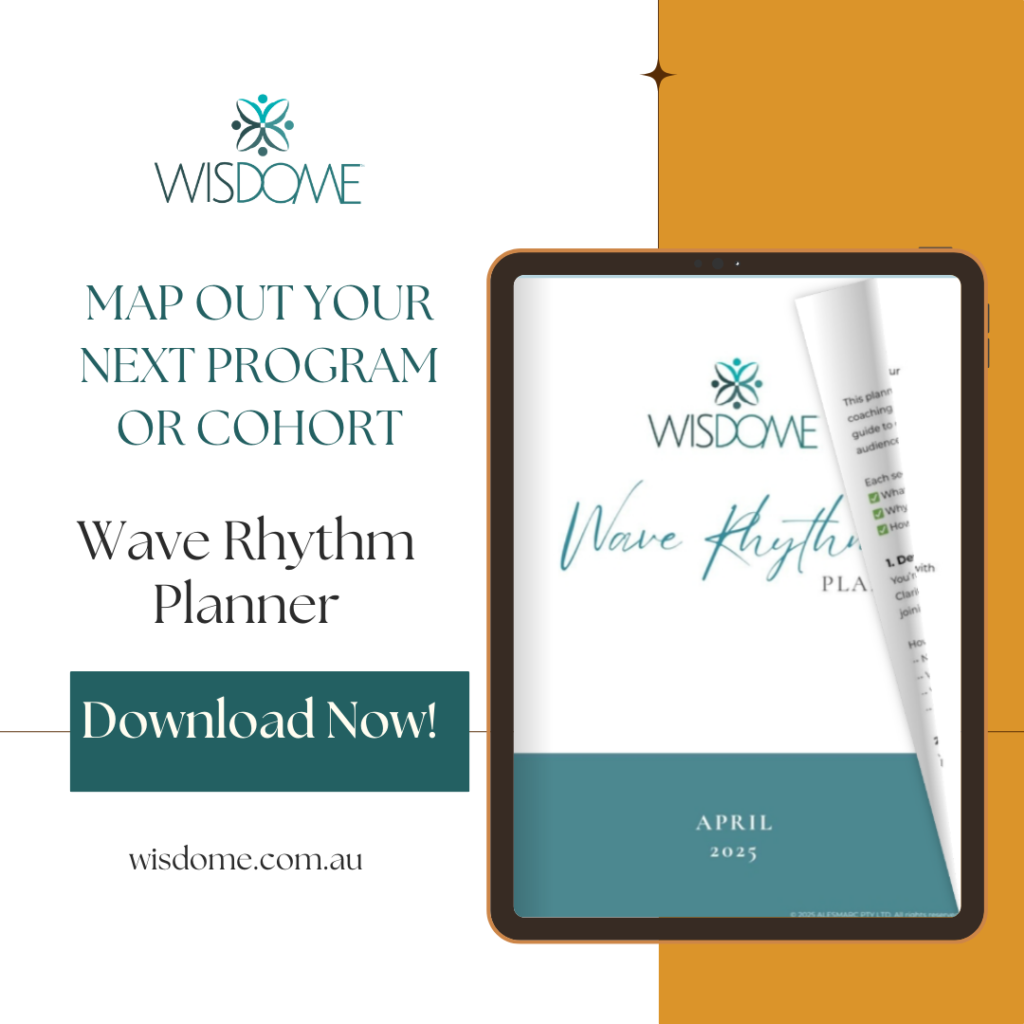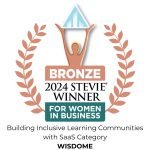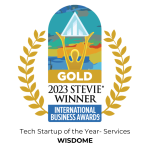Do you want to build a thriving online community but feel overwhelmed by everything that comes with it?
You have this vision of a vibrant online community where you can support others and create a sense of belonging.
However, you’re flooded with questions:
- What should I teach?
- How do I keep people engaged?
- Which platform should I use? What if I pick the wrong one?
Today, let’s explore five essential tips to build a high impact online community without the need to be constantly online.
3 Compelling Reasons to Build an Online Community
Building an online community is more than a smart business move. Yes, the potential income is there, but beyond that, starting a supportive online community means giving a space to help others grow with your guidance. Let’s explore three important reasons to build an online community.
1. Helping Others Makes Us Feel Good and It’s Backed by Science
Did you know that when you help others learn and grow, it has a profound impact on your well-being? It’s not just a feel-good moment; it’s rooted in science.
Psychologists call it the “helper’s high.” When we support others, our brains release chemicals like dopamine and oxytocin. These are the same neurotransmitters that boost your mood, reduce stress, and create a deep sense of fulfilment.
Here’s where it gets even more powerful: giving is an effective shield against burnout. Studies also show that those who support others have lower levels of emotional exhaustion compared to those who don’t.
Showing up for other people replenishes your spirit while helping others grow.
2. Recurring Income Brings Financial Stability and Freedom
Let’s talk about money because building a community also means building a reliable revenue stream.
An online community is a membership business model. This means your members pay a recurring fee to access exclusive content and receive ongoing support from you. Unlike one-time sales, this model gives you predictable income month after month.
Here are more benefits to running an online community around your business:
- It reduces the pressure of constantly chasing new customers
- You create long-term relationships with members who trust and support your work
- You can scale your online business by offering exclusive events and other learning experiences.
3. A Thriving Community Boosts the Value of Your Business
Here’s a key insight that many entrepreneurs overlook: an engaged online community is an asset that increases your brand’s market value.
When you build an online community, you’re creating:
- A warm audience that’s primed for your offers
- Real-time customer feedback and insights
- A built-in referral model through brand trust and word-of-mouth
- Higher customer retention and lifetime value
Additionally, potential investors and business partners will look at your online community as proof of your brand’s strength. This becomes crucial if you ever plan to sell or scale your business in the future.
Why? Because a buzzing online community shows that people believe in what you do; therefore, your business is positioned for long-term growth.
Prefer to watch instead of read? 🎥
We’ve turned this article into a value-packed YouTube video. Grab a cuppa and hit play!
👇 Watch the video now!
Wave-Based Online Community and How It Helps You Grow
A wave-based community is a space built around intentional bursts of energy. It involves short, purposeful activities that bring people together. Think of it as a way to create a rhythm of activities that supports both you and your members. Here’s how:
For You:
Your Energy: Manage your time and effort to prevent burnout.
Your Business Model: Align community activities with your goals.
Your Boundaries: Set clear limits to maintain a healthy work-life balance.
For Them:
Your Members, Students, Leads: Engage them in meaningful ways that inspire trust and connection.
Let’s look at five essential steps to help you create this kind of community; one that thrives without the need to be online constantly.
Step 1: Clarify the Role of Your Community
Before you invite a single member, you need to get crystal clear on why your community exists and what specific role it plays within your overall business model. This step determines everything else; from your content strategy to your engagement rhythm, to the kind of members you attract.
Consider the following:
- Is your community a support space for your live or self-paced course? Where students can ask questions, share progress, and get peer encouragement?
- Is it a venue for a group coaching program, offering structure, accountability, and facilitated growth between live sessions?
- Is it a free hub designed to warm up cold leads, nurture potential clients, and showcase your expertise before a sale?
- Or is it a paid membership space where members access ongoing value like workshops, templates, or expert Q&As?
Each of these models requires a different content rhythm, tone, and commitment level. For example, a support community for a live course may be more intensive during the course period and quieter afterward. A paid membership, on the other hand, needs a consistent flow of perceived value to justify the recurring payment.
Here’s why this matters:
Without a clear purpose, your community can quickly lose its spark and sense of direction. That leads to disengagement from members who aren’t sure of their goals. On the other hand, this could result in burnout on your side as you scramble to create value without a plan.
So ask yourself:
- What’s the core function of this space in my business ecosystem?
- At what stage of the customer journey does this community support them?
- What kind of transformation or outcome will members experience?
Once you’re clear on the purpose, decisions like what to post, how often to show up, and what metrics to track become easier.
Step 2: Use Intentional Waves of Energy
You don’t need to be active every single day to build momentum. Instead, you create waves or periods of focused activity where energy peaks, and then rests.
This could look like:
- A 4-week challenge inside your membership.
- A 6-week live coaching program
- A seasonal push around your launch or promo.
These waves give you and your members something to rally around. They create anticipation and most importantly, they allow rest in between. That’s where sustainability lives.
We’ve left the era of always-on communities. Now, it’s about intentionality which includes creating a space that offers meaningful interactions when it matters, instead of buzzing constantly.

Do you want to start a membership business but are unsure where to begin?
Many aspiring online community leaders get stuck at the starting line, worried about juggling too many tools or spending all their time online trying to keep up.
That’s exactly why we built Wisdome.
Wisdome is your all-in-one membership platform designed for real connection, without the overwhelm.
Here’s what makes it different:
- A built-in social wall so your members can connect in a secure, private space
- Seamless tools to run courses, events, and challenges
- A platform that supports wave-based engagement, so you’re not glued to your screen 24/7
Everything you need to build, grow, and monetise your membership under one roof
It’s time to create your knowledge hub and finally start sharing what you know!
👉Book a Demo Now!
Step 3: Align Your Rhythm with Your Energy
You are the heartbeat of your community. If you’re exhausted or stretched thin, it will show, and it will impact your members.
So design a rhythm that works for you. If you thrive in focused sprints, run a 3-week campaign and then take a breather. If you’re better with a consistent monthly rhythm, stick with that. The key is to match your delivery cycle with your natural energy.
Because you’re building a business and a life. You need both to thrive.
Step 4: Set Expectations Early and Often
Your members aren’t mind readers, and assumptions are the enemy of engagement. One of the most effective ways to create a thriving, respectful, and energised online community is by setting clear expectations from the very beginning and reinforcing them consistently.
Why Expectations Matter
When people know what’s expected of them, and what they can expect from you they feel safe, empowered, and more likely to participate. This sense of structure creates psychological safety and trust, two core pillars of any successful learning or coaching environment.
Think of your community as a guided experience rather than an open room. Without direction, people get lost, passive, or worse leave. But when you give them a roadmap, they’re far more likely to engage, connect, and grow.
🔧 What to Set Expectations Around:
- Your Availability: Let them know when you’ll be active and how often you check-in. Are you going to do live weekly events? Checking in every Monday and Thursday? Answering questions within 48 hours? Be honest and consistent.
- Participation Guidelines: Explain how members can engage. Should they introduce themselves? Use certain hashtags? Join live calls or just watch replays? Make it easy for them to understand the how not just the why.
- Upcoming Events & Activities: Tell them what’s coming. Use monthly calendars, sneak peeks, or pinned announcements to preview events, new content drops, or member milestones.
- What Success Looks Like: Help members visualise what growth or progress means inside your space. Share case studies, before-and-after stories, or example wins. This reinforces purpose and motivates people to show up.
🎥 Tools That Help:
- Welcome Videos: Use a short, friendly video to introduce yourself, your mission, and what they can expect inside. Keep it human and clear.
- Pinned Posts: Your community platform should have a “Start Here” section with pinned posts explaining the rules, rhythms, and resources available.
Onboarding Email Sequences: Automate a warm, helpful welcome email series that guides them through the first 7–14 days with tips, community highlights, and small calls to action.
Pro Tip:
Repetition builds retention. Don’t assume members saw your welcome video or read every email. Remind them regularly. Mention the same core expectations during lives, in comments, and even in DMs when necessary. People need multiple touchpoints to absorb and remember information.
Step 5: Track, Tweak and Trust
Every community is different. So treat this like an experiment.
- Track your engagement. Know when people are most active.
- Tweak your rhythms; try shorter waves, longer breaks, and new formats.
- And most of all, trust the process.
This is about sustainable growth. About building something that energises you and serves your people powerfully. It won’t be perfect straight away. But it will work if you commit to leading with strategy, not stress.
Final Thoughts
The days of being constantly online to prove you care? They’re over. Today’s most successful coaches and creators are building smarter, not louder.
So if you’ve been feeling overwhelmed or afraid to start your community because it seems like a full-time job, breathe. There is another way.
Use this framework. Create your waves. Build your rhythm.
You don’t have to be online at all times to be impactful.

Download the free Wave Rhythm Planner below and start mapping your next move.







